Foods for Treating Hypotension
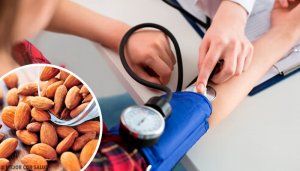
Low blood pressure is also known as hypotension. People with hypotension may experience dizziness, vertigo, or fainting. If you suffer from this problem, there are some foods that can help treating hypotension. Find out what they are in this article.
What is hypotension and what causes it?
Blood pressure is the force exerted by the blood on the walls of veins and arteries throughout the circulatory system.
Therefore, hypotension is lower than normal pressure (according to the range specified by the scientific community according age and sex).
It’s important to know that blood pressure is not the same in everybody. For example, a new-born child has lower blood pressure than a teenager, and an adult has lower blood pressure than an elderly person.
In adults, or healthy and athletic people, normal blood pressure is around 120/80 mmHg. In these cases, hypotension is caused by good cardiovascular health.
However, in elderly patients, it can be a sign of a problem related to the vital organs.
When blood pressure is too low, it means that there is not enough blood-flow to the vital organs. Therefore, the person should not over-exert themselves to avoid an increase in cardiac activity (tachycardia).
Hypotension is diagnosed when the systolic pressure is less than 90 mmHg and the diastolic pressure is less than 60 mmHg.
This can be caused by several factors, including:
- Consumption of anxiolytics, antidepressants or narcotic analgesics
- Heart attack, arrhythmia or heart failure
- Diabetes
- Dehydration and eating disorders
- Consumption of diuretics or medicines for the heart
Basically, the symptoms of low blood pressure are related to weakness and dizziness. The person may also look pale, faint, or suffer from breathing problems or palpitations.
Some also experience headaches, blurred vision, numbness of the limbs, and chest pain.
Daily habits and hypotension
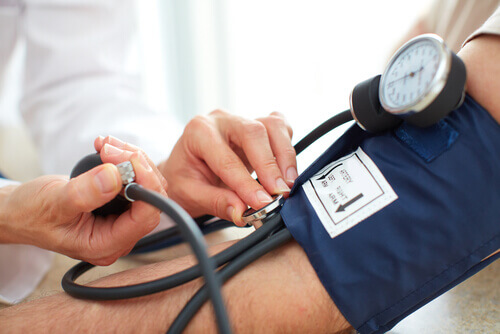
There is much more talk about hypertension than hypotension, since the former usually has more serious consequences for the body.
However, we can also see that there are foods that raise blood pressure in cases of hypotension.
- If someone has low blood pressure, they’re usually given a salty snack. This may be a remedy for the moment, but it’s not advisable to just increase your salt intake because it can cause the opposite problem.
- It’s also recommended to eat some salty food at breakfast (for example, a slice of bread with butter) and avoid prolonged periods without eating.
- It’s far better to eat 6 moderate portions than 3 or 4 large ones. Divide your meals into breakfast, mid-morning, lunch, mid-afternoon, a snack and dinner. This way, you’ll avoid having an empty stomach for many hours and lowering your blood pressure.
- In addition, you should try not to consume sugary drinks or coffee. Although this activates blood circulation, the effect is brief. But once it happens, blood pressure may fall to lower than before.
- Also, it’s not good to drink alcohol because it reduces cardiac output and the health of your veins.
What foods should you consume when you have hypotension?
These foods can help you whether you suffer from momentary low pressure or consistent hypotension. In any case, we recommend that you consult a doctor to work out the reason for the problem.
1. Beetroot juice
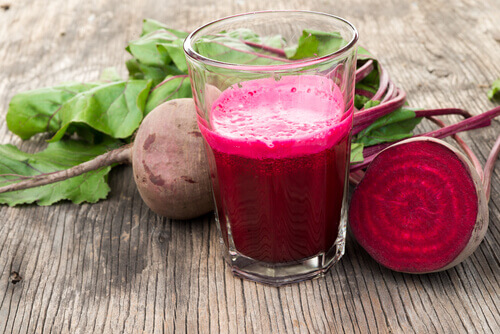
Due to its content of natural sugars, beet, or beetroot, has the ability to regulate blood pressure.
You can drink it on an empty stomach, in the morning or in the afternoon when you return home as a way of treating hypotension.
Ingredients
- 2 beetroots
- ½ cup of water (125 ml)
Preparation
- Peel the beetroot and cut it into pieces.
- Place in the blender and add water.
- Mix well until you get a smooth shake.
- Drink immediately (you can add ice cubes or mint leaves if you wish).
2. Raisins
These naturally keep blood pressure levels within normal limits, since they improve the function of the adrenal gland.
You can eat a handful of raisins when you experience the first symptoms of hypotension.
3. Water
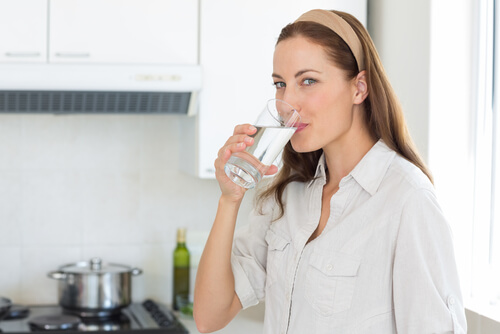
In some cases, blood pressure drops when we’re dehydrated. Therefore, don’t forget to drink at least 2 litres of water per day.
At the first moment that you feel that your pressure is “on the floor”, we recommend that you consume drinks containing electrolytes (common among athletes), as they contain minerals such as magnesium, sodium, and potassium.
4. Almonds
Almonds act in a similar way to raisins. You can eat them raw or make almond milk (or buy it).
A home-made recipe for hypotension can be made with cow’s milk and has good results.
Ingredients
- 5 almonds
- 1 cup of water (250 ml)
- 1 cup of milk (250 ml)
Preparation
- Soak the almonds in the cup of water overnight.
- The next morning, remove the water and remove the skin from the almonds.
- Crush them with a pestle and mortar and mix them with the milk (hot).
- Drink it on an empty stomach several times a week.
5. Legumes and cereals
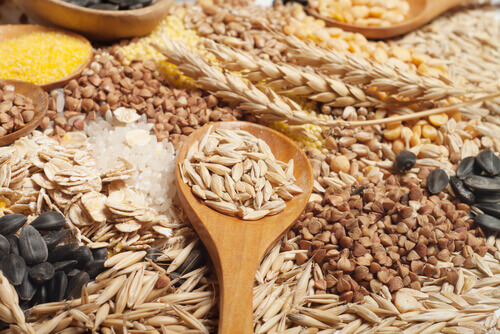
A vitamin B deficiency can cause low pressure.
6. Carrot juice
A glass of carrot juice per day gives you many vitamins and proteins and also regulates blood pressure. It’s better to drink it on an empty stomach.
Ingredients
- 2 carrots
- 2 tbsps. of honey (50 g)
- ½ cup of water (125 ml)
Preparation
- Peel the carrots and grate them.
- Put them in a blender with the honey and water.
- Process for a few minutes and drink straight away (you can add ice cubes).
All cited sources were thoroughly reviewed by our team to ensure their quality, reliability, currency, and validity. The bibliography of this article was considered reliable and of academic or scientific accuracy.
- McClave, S. A., & Chang, W. K. (2003). Feeding the Hypotensive Patient: Does Enteral Feeding Precipitate or Protect Against Ischemic Bowel? Nutrition in Clinical Practice. https://doi.org/10.1177/0115426503018004279
- Tritapepe, L., Nencini, C., & Tallarico, D. (2012). Hypotension. In Echocardiography for Intensivists. https://doi.org/10.1007/978-88-470-2583-7_30
- Landry, D. W., & Oliver, J. A. (2001). The pathogenesis of vasodilatory shock. The New England Journal of Medicine. https://doi.org/10.1056/NEJMra002709
This text is provided for informational purposes only and does not replace consultation with a professional. If in doubt, consult your specialist.








